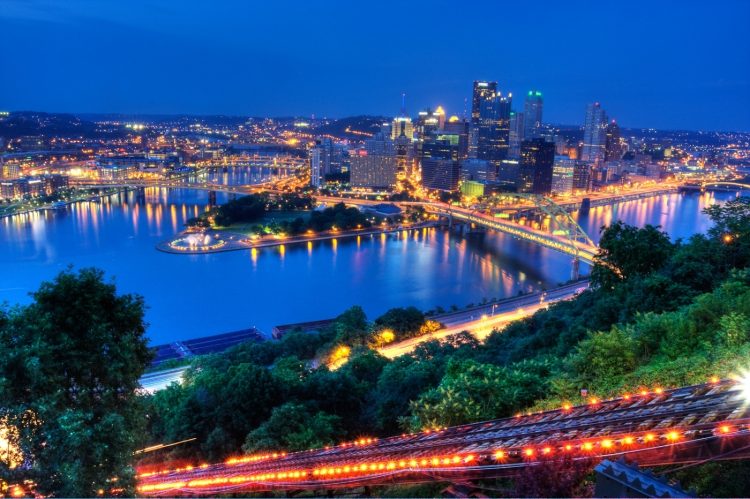Twenty years ago if you mentioned to anyone that you were going to Pittsburgh the response would’ve been “Why? Everything is covered with grit from the steel mills.” That was true then; today Pittsburgh has come a long way from its “steel city” days and is now a growing metropolis known for healthcare, robotics and high tech companies like Apple, Google and Intel.
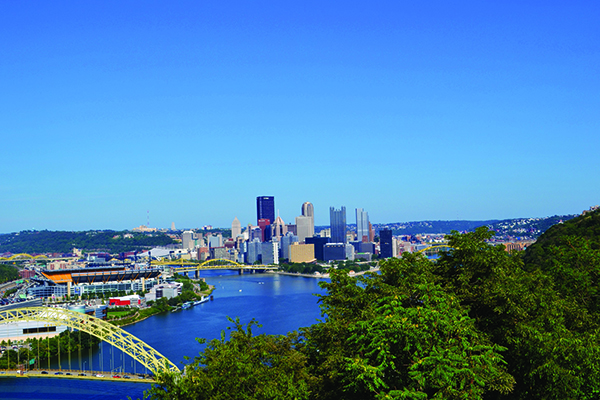
In 1980 almost all the steel mills closed, mainly because they wouldn’t adhere to new regulations imposed by the EPA. This put thousands out of work and a substantial exodus greatly diminished the city’s population. The upside of that was that it forced the city council to clean up and develop a new economic plan. Money was channeled into efforts to make the city “green” and to broaden its arts and culture. Today the Allegheny, Monongahela and the Ohio Rivers sparkle and Pittsburgh is the 5th greenest city in the U.S. It has been named one of the best places in the world to visit.
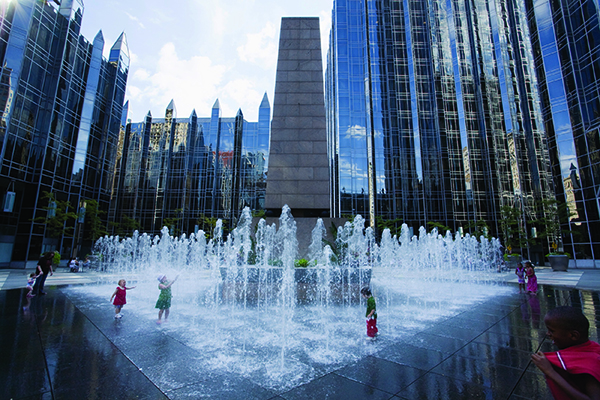
It’s a city that I return to again and again, always finding something to pique my interest.
The history of the steel factories is kept alive by the Rivers of Steel National Heritage Area. Guides at three sites there, the historic Bost Building, the Pump House and the Carrie Blast Furnace, relay the story of how Andrew Carnegie began his steel empire here in the 19th century. He and his business partner Henry Clay Frick ultimately made Pittsburgh the world’s largest producer of steel with Frick controlling the coal that Carnegie needed for the process. Rivers of Steel has also developed self-guided driving tours. Their Routes to Roots covers five counties taking you to mill towns where you get a deeper sense of the history of steel making.
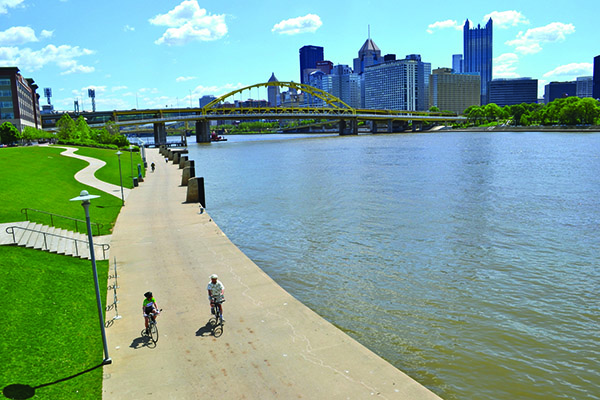
Pittsburgh’s downtown has beautiful architecture. The Romanesque style Allegheny Courthouse and County Jail was designed in 1884 by Henry Hobson Richardson, famous for his Trinity Church in Boston. Philip Johnson’s Pittsburgh Plate Glass building is a gleaming tower presiding over Market Square. The Pittsburgh History & Landmarks Foundation offers guided tours of the downtown and several of the city’s ninety neighborhoods. The fourteen-block Cultural District between Liberty Avenue and Fort Duquesne Boulevard is home to public parks boasting outdoor art installations, numerous cutting edge galleries, and theaters offering plays, the symphony, opera and ballet performances.
Within walking distance of downtown is The Strip. This half mile swath of land is lined with 19th century factory buildings that are now filled with fish markets, spice shops, ethnic food markets, and restaurants.
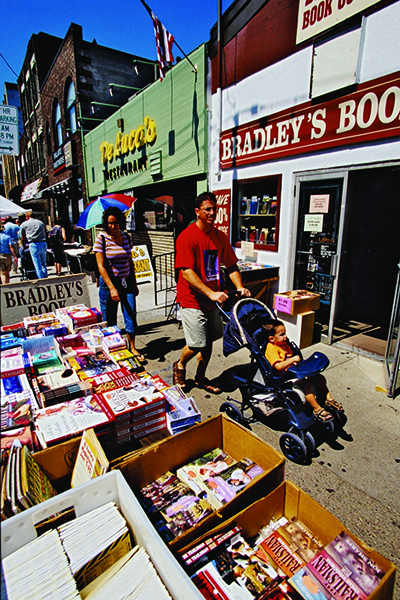
On weekends street vendors selling handmade arts and crafts line the sidewalks. The Society for Contemporary Craft, situated on the fringe of the area, is filled with artworks by local artisans.
Stoke up on a hearty breakfast at Pamela’s or Kelly O’s. If it’s biscotti you want Enrico’s has the best; for fresh pasta stop by the Pennsylvania Macaroni Company or get homemade sausages at Parma Sausage. The pierogis and stuffed cabbage at S&D Deli have been featured on the Travel Channel’s Bizarre Foods. Primanti Brothers is practically an institution here. Since 1933 it has made gigantic sandwiches with everything in between the bread, even French fries. This place is always busy so be prepared to wait and trust me, don’t ask for the fries on the side. A hush will come over the restaurant because it’s like asking the unimaginable.
Some of the must sees at the Senator John Heinz History Center include Mister Rogers’ Neighborhood, with a reproduction of the set used on the popular television show and a life-sized statue of Fred Rogers, a Pittsburgh native, wearing his red sweater. The Heinz Exhibit pays tribute to the company’s history, founded here in 1879, with interactive displays. The Sports Museum of Western Pennsylvania contains all the information you’ll ever want to know about the Steelers (football), the Pirates (baseball) and the Penguins (hockey.)
Henry Clay Frick and his wife Adelaide were serious art collectors. Their home, Clayton circa late 1870’s, is an Italianate mansion filled with works by Monet, Childe Hassam, John Beatty and George Hetzel. The Frick Art & Historical Center houses a vast collection of both fine and decorative arts.
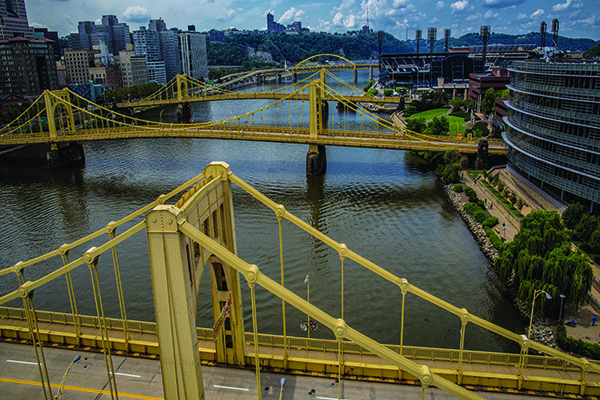
At the Phipps Conservatory and Botanical Gardens you can admire hundreds of different varieties of plants. The conservatory is all about leaving no carbon footprint on the planet. Since 2006 it has been the “greenest” conservatory in the world. Their welcome center is built underground with a grass roof to conserve energy. The Center for Sustainable Landscapes is a LEED Platinum building recycling the conservatory’s water and producing its own energy.
Pittsburgh has the only museum in the country with the largest collection of works by one artist – Andy Warhol. Why? Because he was born and raised in Pittsburgh and is buried there.
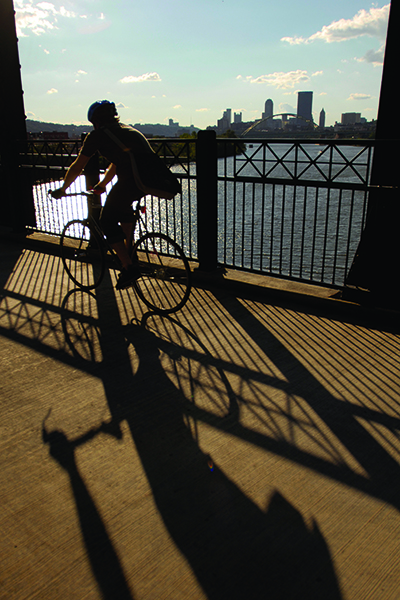
A camera at his grave records images and projects them onto a screen in the museum’s lobby. Inside are photographs of a young blonde-haired Andy before he became “Warhol.” The art consists of his iconic pop-art pieces – the Campbell’s Soup Can that he painted as a nod to the Heinz family, and his portraits of Elizabeth Taylor, Jackie Kennedy, and Marilyn Monroe to name a few.
Steel magnate Andrew Carnegie’s dream was to bring the world to Pittsburgh. To that effect he established the Carnegie Library, the Carnegie Museum of Art, the Museum of Natural History and the Carnegie Technical Schools, now Carnegie-Mellon University. This complex is one stop shopping for culture. After ogling the dinosaurs at the Natural History Museum you can walk over to the art museum to get your fill of works by Jasper Cropsy, John F. Kensett, John Singer Sargent, Claude Monet and Edgar Degas.
Threading around the city are miles of trails for biking and walking. Schenley Park has 400 acres of trails and woods. Great views of downtown surround you while biking or walking Point State Park. The Pump House at the Rivers of Steel National Heritage Area is a trailhead for seven trails that go along riverfronts and re-purposed railroad tracks.
The Great Allegheny Passage stretches from Point State Park 335 miles through small towns in Pennsylvania and Maryland to Washington DC. Costing $80 million to complete, the Passage melds with the 185 mile long C&O Canal Towpath in Cumberland Maryland.
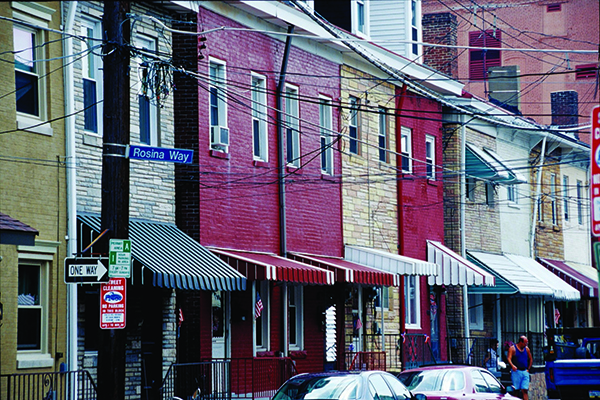
And this is just the tip of the iceberg for what Pittsburgh has to offer. Make it more than just a long weekend!
The area code for Pittsburgh is 412.
Where to Stay:
Omni William Penn Hotel – The Omni William Penn Hotel opened its doors in 1916 and recently underwent a multi-million dollar renovation. As the preferred hotel of movie stars, politicians and the Pittsburgh Steelers, there’s no greater feeling of luxury in downtown Pittsburgh. 530 William Penn Place, 412-281-7100; www.omnihotels.com
Hotel Monaco Pittsburgh – Pittsburgh is a city that’s emerging in the world of arts and design. In their 248 guest rooms, you’ll find Kelly green headboards and golden birdcage chandeliers right next to your bedside. Bold design and style choices make this hotel a perfect spot for travelers with an appreciation for aesthetics. 620 William Penn Place, 412-453-4760; www.monaco-pittsburgh.com
Fairmont Pittsburgh – Situated right in the heart of Pittsburgh, the Fairmont Pittsburgh is only a short walk away from top-class theaters, sports facilities, restaurants and sightseeing destinations. Glass and steel features are scattered throughout the hotel’s décor – a subtle embracing of the city’s rich history and culture. 610 Market St., 412-773-8800; www.fairmont.com
Where to Eat:
P&G’s Pamela’s Diner – There aren’t many people who would turn down a breakfast of comfort food to start the day. Heck, you may even prefer to order breakfast at dinner time at Pamela’s, and nobody will bat an eye. You won’t find pancakes, crepes, and hot cakes as delicious as the ones made here. 5527 Walnut St., 412-683- 1003; www.pamelasdiner.com
S&D Polish Deli – Located in Pittsburgh’s Strip District, this hole-in-the-wall deli is famous for its Polish delicacies. With their renowned pierogi and stuffed cabbage, the deli was featured on Travel Channel’s show Bizarre Foods with Andrew Zimmern. 2204 Penn Ave., 412-281-2906; www.sdpolishdeli.com
Primanti Bros – If you’ve been in business for over 80 years, then you must be doing something right. This famous sandwich spot is notorious for its gigantic portion sizes and willingness to put anything and everything between two slices of bread. French fries in your sandwich are the norm here, so take that for what you will. 46 18th St., 412-263-2142; www.primantibros.com
What to See & Do:
Rivers of Steel National Heritage Area – www.riversofsteel.com
Pittsburgh History & Landmarks Foundation – www.phlf.org
Pittsburgh Cultural District – http://culturaldistrict.org
Pittsburgh Strip District – www.VisitPittsburgh.com
Society for Contemporary Craft- http://contemporarycraft.org/
Senator John Heinz History Center – http://www.heinzhistorycenter.org/
Frick Art & Historical Center – www.thefrickpittsburgh.org
Phipps Conservatory & Botanical Gardens – https://phipps.conservatory.org
Warhol Museum – www.warhol.org
Carnegie Museum of Art & Museum of Natural History – Carnegie Museums –www.carnegiemuseums.org
Schenley Park – www.pittsburghparks.org
Point State Park – www.dcnr.state.pa.us/stateparks/findapark/point
Great Allegheny Passage – www.atatrail.org
Where to Get More Info:
Visit Pittsburgh, 412-281-7711; 800-359-0758

